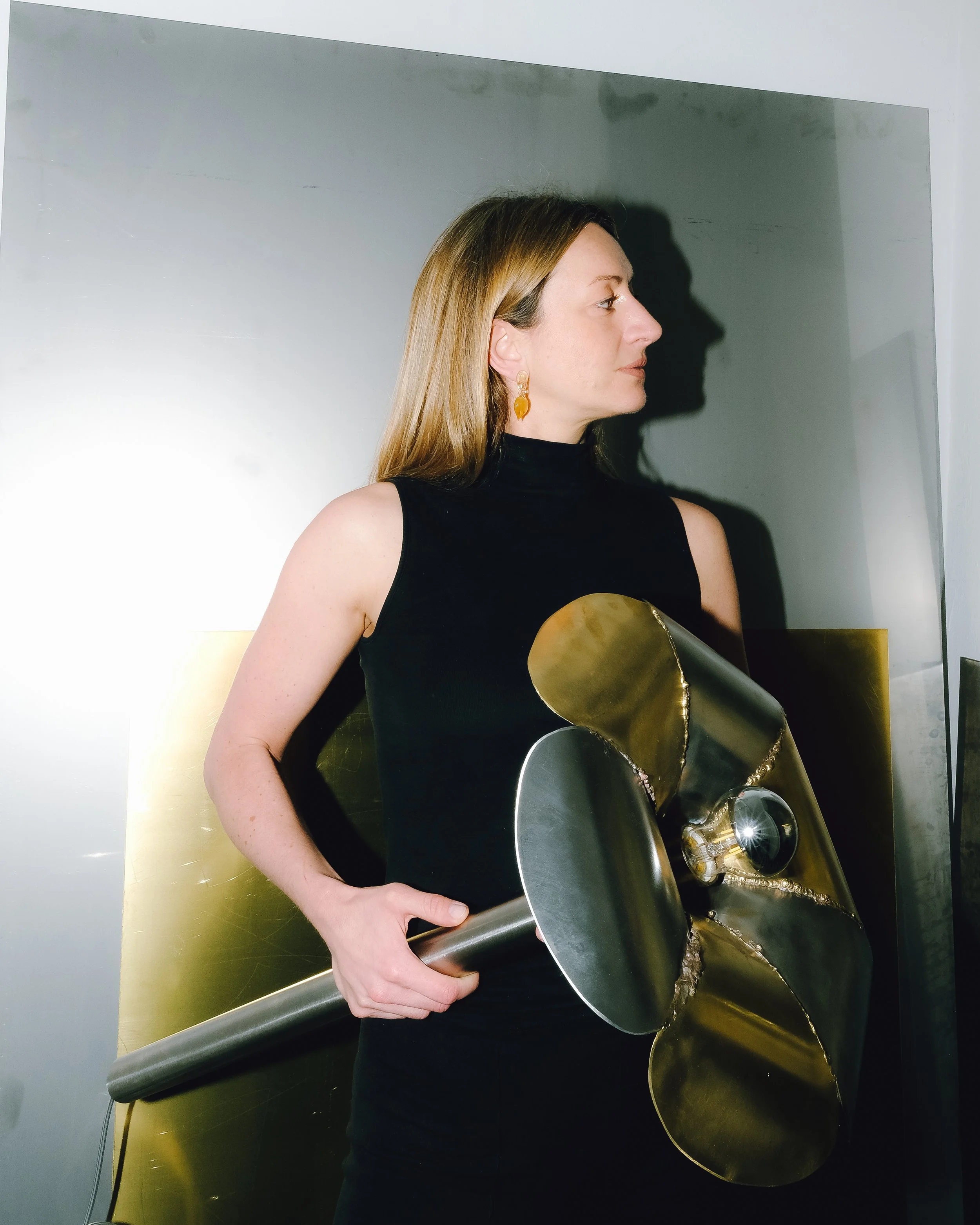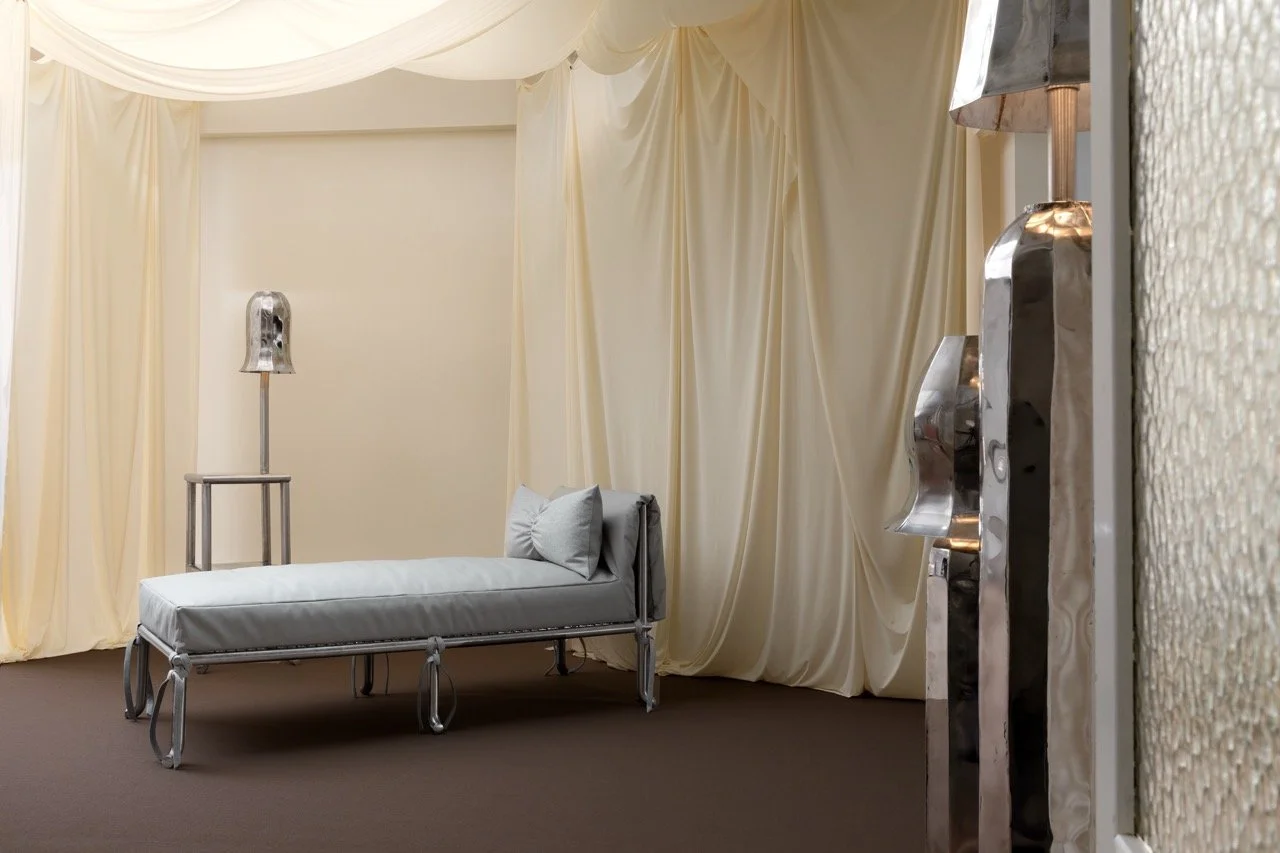Studio Kuhlmann
Hannah, please introduce yourself:
My name is Hannah, though most people know me under the name Studio Kuhlmann. In my practice, I focus on the objects we share our everyday lives with – I design and produce everything myself in my workshop in Cologne.
© Daniel Méndez Partida
#1 What led you to found your own studio after graduating from the Academy of Fine Arts and Design in Maastricht in 2015, and how did that change your way of working?
After my studies, I worked as a junior designer for a studio in Amsterdam, but I moved back to Cologne for love. I didn’t know any office or studio in Cologne that was working in a way I felt drawn to. I also wasn’t sure whether I wanted to create objects myself or focus more on curating — bringing people together, creating a platform — so I tried to do both in parallel at first. But the real reason for founding my studio was that I simply couldn’t see who I could have worked for, so I created the workplace I had been looking for. It was a tough journey, but I’m incredibly grateful that it worked out so well in the end.
#2 You often bend and weld stainless steel tubes into sculptural furniture and lighting. How did you start working with this material, and what keeps you drawn to something so strong and resistant?
While still in school, I did a lot of voluntary internships — with fashion designers, small furniture workshops, and a goldsmith for a longer period. I’ve always been fascinated by metal; I’m simply drawn to shiny things and to polishing. I felt that materials like wood, ceramics, textiles, screen printing or painting could be explored more easily in an autodidactic way, but metal didn’t feel like that to me. I wanted to learn something at the academy that I couldn’t have taught myself — something I wouldn’t easily have access to again after graduating.
The metal workshop at the academy was almost always empty, and I assumed it must be incredibly complicated to make anything with metal. That shaped my thinking deeply — since then I somehow believe that everything is possible if you have the right tools. It applies to fabrication, but also to life.
Nothing is impossible.
Courtsy St Vincents - Lucid Dreams - Lady Glove, Lilly of the Valley, Pillow Queen, Power Napper © Eline Willaert
#3 When you design an object, do you think about how people will live with it – or is it more of an autonomous statement?
Absolutely, I think about the people. I work mostly on commission, and while I’m making an object, I think about the person who ordered it and the place it will eventually inhabit. If a piece is ordered through the gallery St Vincent in Antwerp and I have very little information about who it goes to, I imagine Henri’s or Gigi’s reaction instead. I usually ask for a picture once the piece is installed, and it makes me genuinely happy to receive one. And when I build a prototype, it usually ends up in my own apartment first.
#4 Many of your works shift between art and design. How do you navigate that space, and when does a piece become more than a piece of furniture for you?
To be honest, I don’t care much about that debate. It creates hierarchies and value judgments but very little communication. We should free ourselves from the rigid ideas we have about furniture and objects in our homes – I find them far too stiff. These are the objects we spend most of our time with. I spend more time with my bed than with any other piece of furniture. The idea that it could be a banal object is, to me, incredibly boring.
Sunheart & Lilith ©Hannah Kuhlmann
Sunhat Sailor ©Saskia Kinast
#5 You work in Cologne. How does the city shape your practice, and how do you connect that with international and interdisciplinary dialogues?
My father always said: boredom is the best thing that can happen to you — that’s when something starts happening in your head. I couldn’t agree more. I grew up in Cologne, and I have almost no FOMO here. Cologne doesn’t ask anything from you, and I love that. As a full-time artist or designer — whatever you want to call it, creative — it’s quite hard to find your own routine, and it took me a while.
I enjoy a sports class in the morning, my workshop just around the corner, and all the necessary suppliers nearby. I’ll have a chat with the postman, I’ll eat the same soup three times a week at my favorite Chong Qing place, and on Fridays I’ll visit my friend Alina at MD Bar. On weekends, if I stay home, I’ll drive over to Düsseldorf to hang out with the Blow Shop peeps, or I’ll take a short city trip, because Cologne is just geographically perfect to have the best cities within reach.
I love its location: three hours to Paris, two hours to Brussels or Antwerp by train, and, depending on traffic, also close to Amsterdam, Maastricht, or Eindhoven by car. Don’t even get me started if you get on a plane. Everything is somehow just around the corner, and these are cities I love spending time in.
Cologne gives me the quiet I need to develop work without constant overstimulation, while its location allows me to stay connected to international conversations whenever I choose. It’s a place where I don’t feel like I’m missing out, yet I can reach the cultural scenes that inspire me. That balance — grounded here, connected elsewhere — is what shapes my practice.
St Vincents Antwerp - Bed Bug, Lady Glove, Pillow Queen & Lilly of the Valley & Morning Dew © Eline Willaert
#6 You produce in independent small series. What are the biggest challenges and gifts of working that way?
The biggest challenge is making a lamp look the same twice – each one turns out slightly different. Most people love that, but some want exactly the piece they saw in an image. That requires negotiation. At the same time, this approach gives me the freedom to produce the way I want and to truly follow the process. That is the greatest pleasure for me.
#7 How do you see the role of an architect in today's society?
To be very honest, I am often disappointed by contemporary architecture. Why do new buildings often look so terrible? Every time a gap opens in the city, something gets thrown in there that gives us nothing back. I expect buildings that inspire, that serve us in daily life, that welcome us with dignity. Spaces that impress – not depress!
The Semiotics of Dressing, 2025 Jaqueline Sullivan Gallery New York, United States - ©William Jess Laird
#8 How does your environment influence your work?
I can’t define it precisely. But I believe my work mirrors who I am, what I’m drawn to, and the challenges I choose to face. Because I build all objects myself, they all carry certain limits — in scale, in weight, and in how many of them can exist at all. Those limits are set by my body, my tools, and my time. And that, to me, is not a restriction but a fascinating part of the work — and also a political stance.
#9 Three things that inspire you at the moment?
Jewelry.
Yoram, my spinning instructor.
Su Cai Mi Xian soup with rice noodles — fewer noodles, lots of broth, and the dumplings as a starter.
#10 What do you currently read, watch, listen to?
birds
Ashley Markle, Bedbug in Collaboration with Holle Schlickmann
Links
Instagram: studiokuhlmann
Website: https://hannahkuhlmann.hk
Interview by Lisa Puschmann















